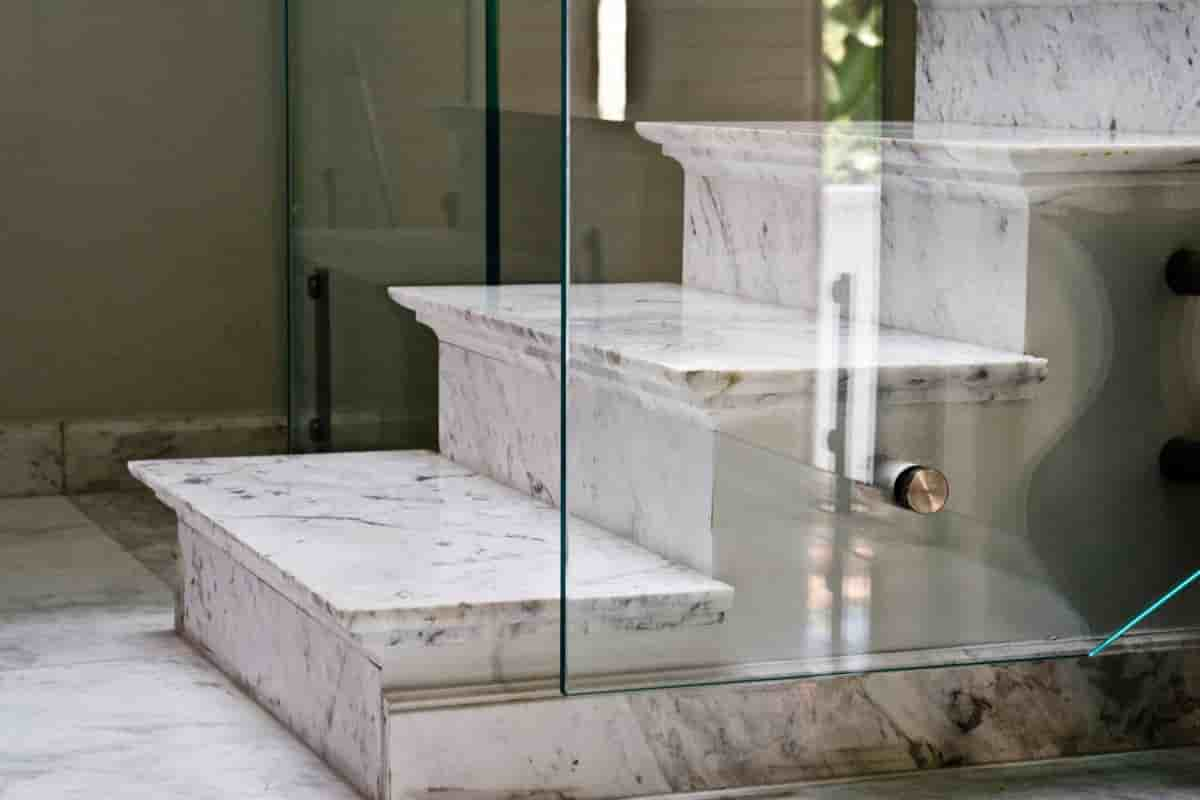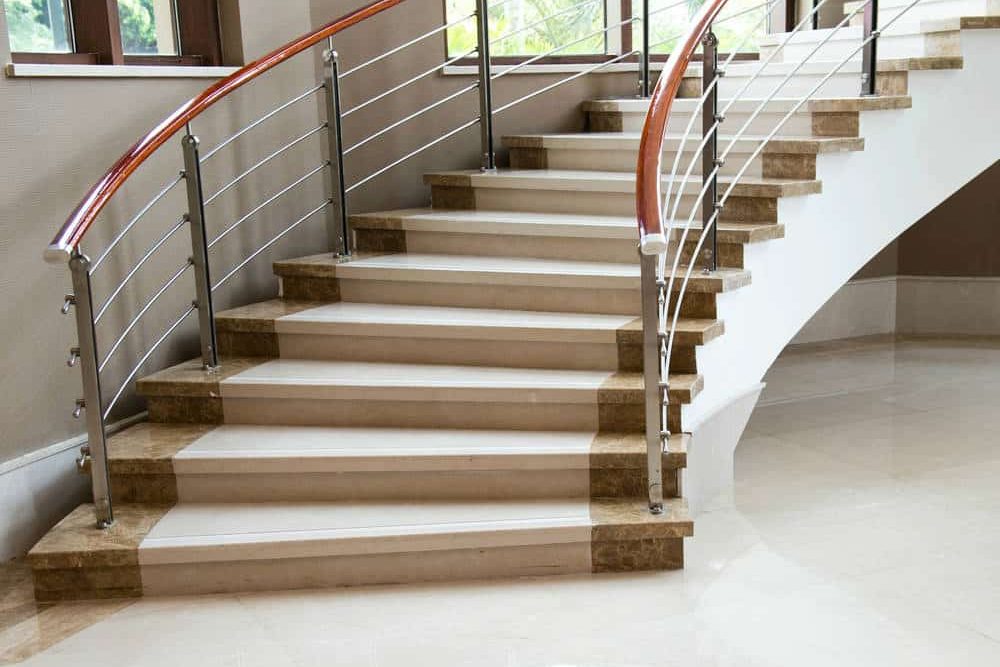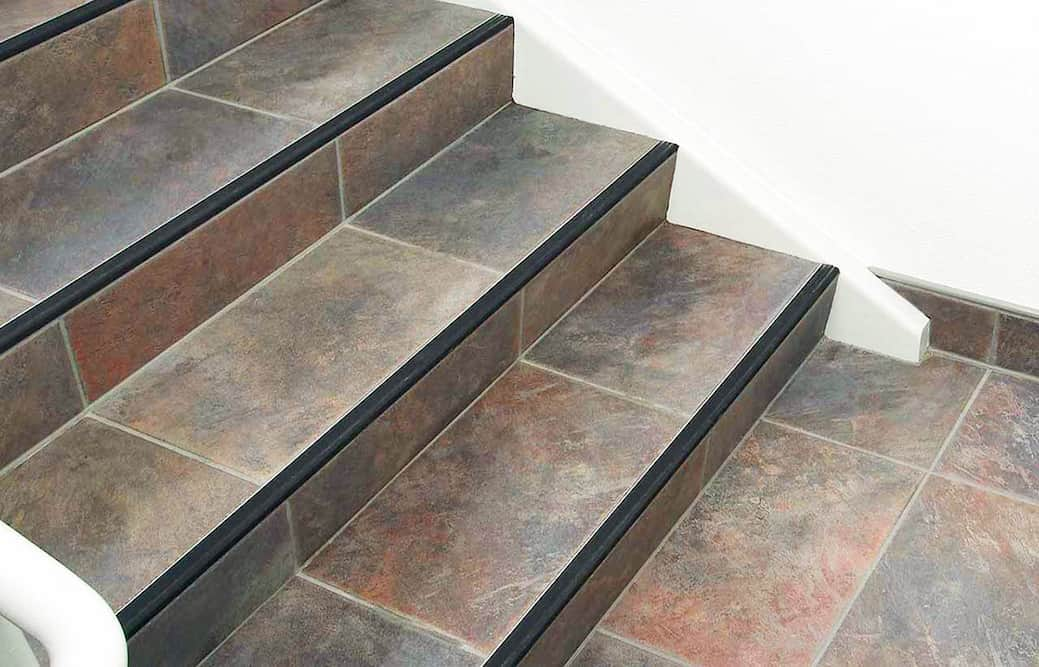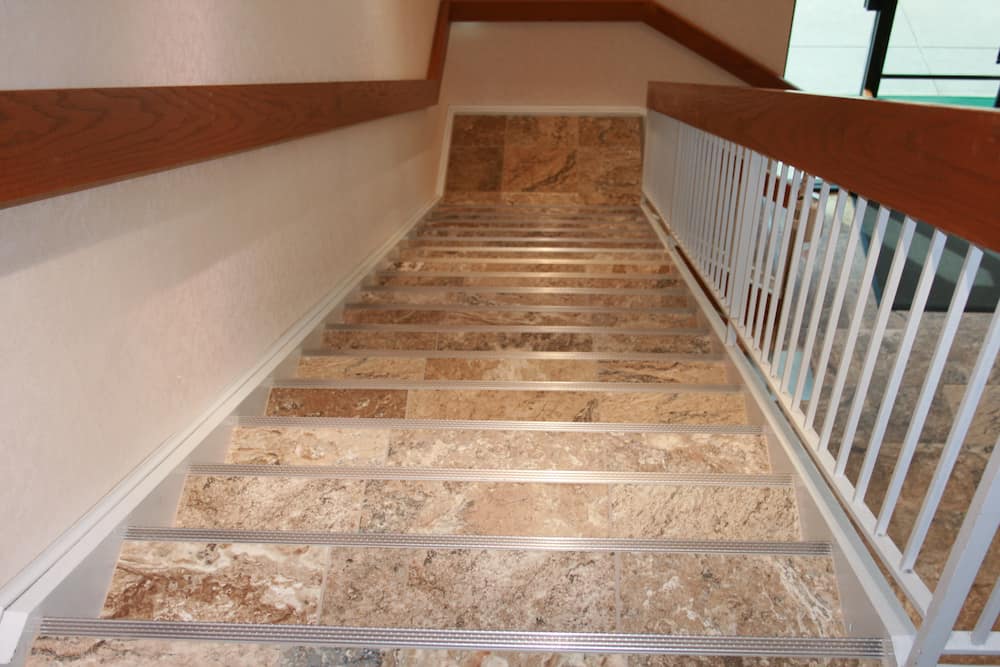Why settle with drab or outdated staircases? Your front stair should represent the elegance and beauty of your home. Using ceramic tiles vs natural stone tiles are the simplest way to achieve this effect on your staircase.
Durability, perfect quality, safety and affordable rate take precedence over aesthetics when selecting the most suitable tiles for stairways. With the proper tiles, you may build a trustworthy and stylish staircase design.
Materials of Durability
Your staircase will be ascended several times daily. They must be constructed from a material that can survive repeated use. Natural stone is an excellent alternative for tiling. Consider the vast number of examples of old architecture that have excellent marble staircases.
Some of them have survived for centuries. Using natural stone tiles might help your home reach the same degree of resilience. In addition to marble, other materials to consider include limestone, travertine, slate, and onyx.

Secure route
The staircase might be one of the most hazardous locations in the home. Selecting the flooring material with care is required. On staircases, it is advised to install the tiles that are least likely to cause a fall.
The dynamic coefficient of friction (DCOF), a grading system utilized by tile specialists, assesses a substance’s ability to resist slippage.
The grade is higher the safer the surface is for walking. Experts believe that inclines, particularly staircases, require a higher DCOF value than other regions of the home.
Your staircase should be constructed with tiles with a grade of 0.65 or above. You can locate porcelain or stone tiles that fit this criterion by requesting suggestions from your tile provider.
The tile’s apex
Close inspection of a staircase reveals a little overhang at the intersection of the treads (the flat parts) and the risers (the vertical sections). This is known as nosework. It may improve traction and expand the available landing surface for your foot. Moreover, nodding protects each step’s essential component from injury.
Typically, metal or vinyl strips are utilized to manufacture stair nosings. Although they are practical, they lack aesthetic appeal. The selection of tile nose is far more luxurious. With natural stone stair treads, the nosing may be integrated into each tread.
solid colors
When renovating your staircase, safety should take first. If a family member has worries about stability, it is extremely vital to pick the safest materials.
Carpet is one of the most slip-resistant stair coverings. Obviously, the thought of installing carpet might conflict with your goals for a beautiful tiled staircase.
However, there is a possibility that the two conceptions may converge. Consider installing a carpet runner around the center of the stairs. It will offer you or your family with the necessary traction. Both sides of the runner will continue to showcase your beautiful tiles. Consider solid-color tiles if you choose to pursue this strategy.

They will provide a magnificent backdrop for the chosen runner. Different parallels exist between ceramic tiles and the numerous types of real stone that are readily available. Both of these hard-surface flooring options are exceptionally durable, water-resistant, and adaptable to a wide range of environments.
The primary distinction is the glass-based coating that may be applied on ceramics to protect them from stains and damage.
Ceramic tile may be designed to imitate a variety of elements, including wood, glass, metal, and, yes, natural stone. Numerous diverse components, each with their own features and characteristics, compose mountain-formed stone.
Granite
Granite, the hardest and most durable construction-grade stone, can be honed flat, polished smooth, or left in its original texture. Even though it is resistant to stains and water penetration, it is slightly porous and must be sealed following installation to preserve the tiles and grout lines.
slate
Slate, a striated material composed of layers of flat, densely packed stone compressed into solid pieces by the weight of the earth, is nearly as hard as granite.
As a result, the material’s structure is exceptionally resistant, preventing fractures and breaks. The margins of tiles are susceptible to minor chipping. As with other porous stones, slate should be chemically sealed after installation, and periodic reapplication is recommended for maximum results.

Limestone
Limestone is porous, has a moderate density and strength, and is somewhat dense (must be sealed). It frequently withstands the weather well, acquiring an aged, antique appearance reminiscent of old stone structures over time.
sandstone
The porous nature of sandstone necessitates frequent treatment with many applications of a high-quality penetrating sealer and a surface sealer. Sandstone is often not recommended for use in bathrooms or other wet or humid environments.
Ceramic floor tile varieties
Glazed and unglazed ceramic floor tiles are available. Due to its composition of clay or soil, unglazed ceramic tile has several drawbacks with stone tile.
Ceramic that is glazed
The majority of ceramic tiles have an impermeable glaze covering the surface of the original clay substance. The glazed surface is resilient, water- and stain-resistant, and extraordinarily long-lasting. It does not require any protective coating or sealant.
Ceramic devoid of glaze
Ceramic is created by baking clay and sediment to a hard consistency in a kiln. In its natural state, it is very porous and readily absorbs liquids and staining agents. This may be mitigated by sealing the floor with a high-quality chemical ceramic tile sealer. Due to the raw, unpolished look of pure clay, unglazed materials are usually chosen over more durable alternatives.
Terre Cotta
Terra cotta is a specific type of unglazed pottery made from a red clay that is manufactured in Mexico and some parts of Europe. These materials produce tiles with patterns and hues that are appropriate for southwest-style architecture. Due to the material’s permeability, stains and water absorption must be prevented.

Similar Maintenance
In terms of water permeability and porosity, unglazed ceramic is equivalent to a mid-range travertine stone material. To prevent stains, it must be routinely sealed.
Even while harder options such as granite and slate may occasionally wear well after a single treatment, natural stone materials must nevertheless be preserved. You should not worry about water penetrating glazed ceramic, and the tile is not need to be sealed.
However, regardless of tile type, all grout lines in floor tiles should be sealed to prevent discoloration and staining. The only exception to this rule is epoxy grout, a specialty compound utilized in some ceramic and stone tile installations.
Acidic cleaners may damage natural stone. Because of this, you should avoid using acidic cleaners, as they may react with the stone and create a lasting stain. If spills or sprays of acidic chemicals, such as vinegar, occur, protecting the surface will help mitigate the damage.
On glazed ceramic, you may completely disinfect the area by using nearly any cleaning agent. When using harsher chemicals, care must be taken not to harm grout lines excessively.
In addition, you must ensure that the area being cleaned is sufficiently ventilated and follow the cleaner’s manufacturer’s instructions.
Durability
The temperature of the kiln during the firing of ceramic tiles is what gives them their structural integrity. Producing more durable materials, like as porcelain, at higher temperatures.
The glaze on each and every glazed tile reduces wear and eliminates scratches. Granite and slate are more durable than marble and limestone, and the material used to create natural stone varies.

However, certain types of stone and materials may be more susceptible to chipping at the tile’s corners and along its edges. Generally speaking, glazed ceramic is the most convenient, stain-resistant, and low-maintenance flooring material.
However, because ceramic is not a natural material, it cannot duplicate stone in its entirety. However, it may simulate the look of stone. For this reason, even though it requires more maintenance and care, people typically opt for the less resilient natural option.










Your comment submitted.